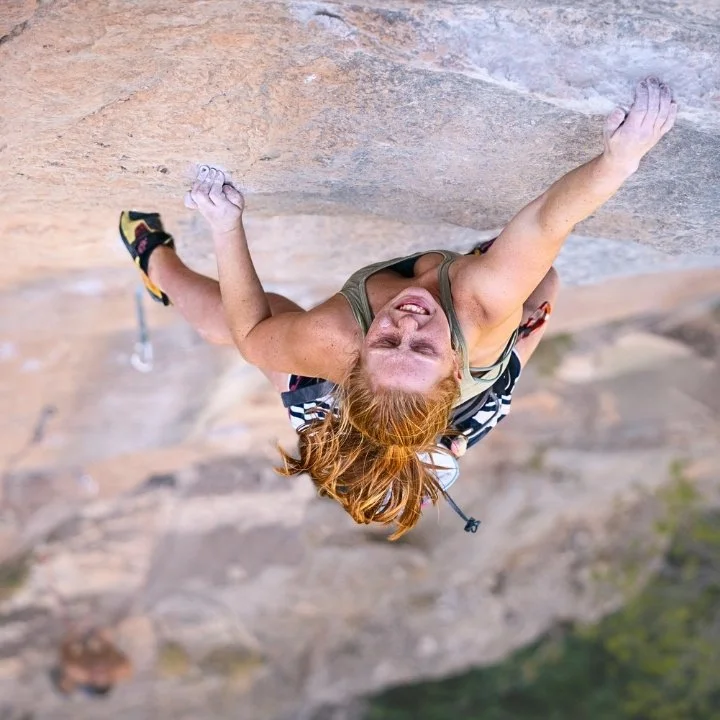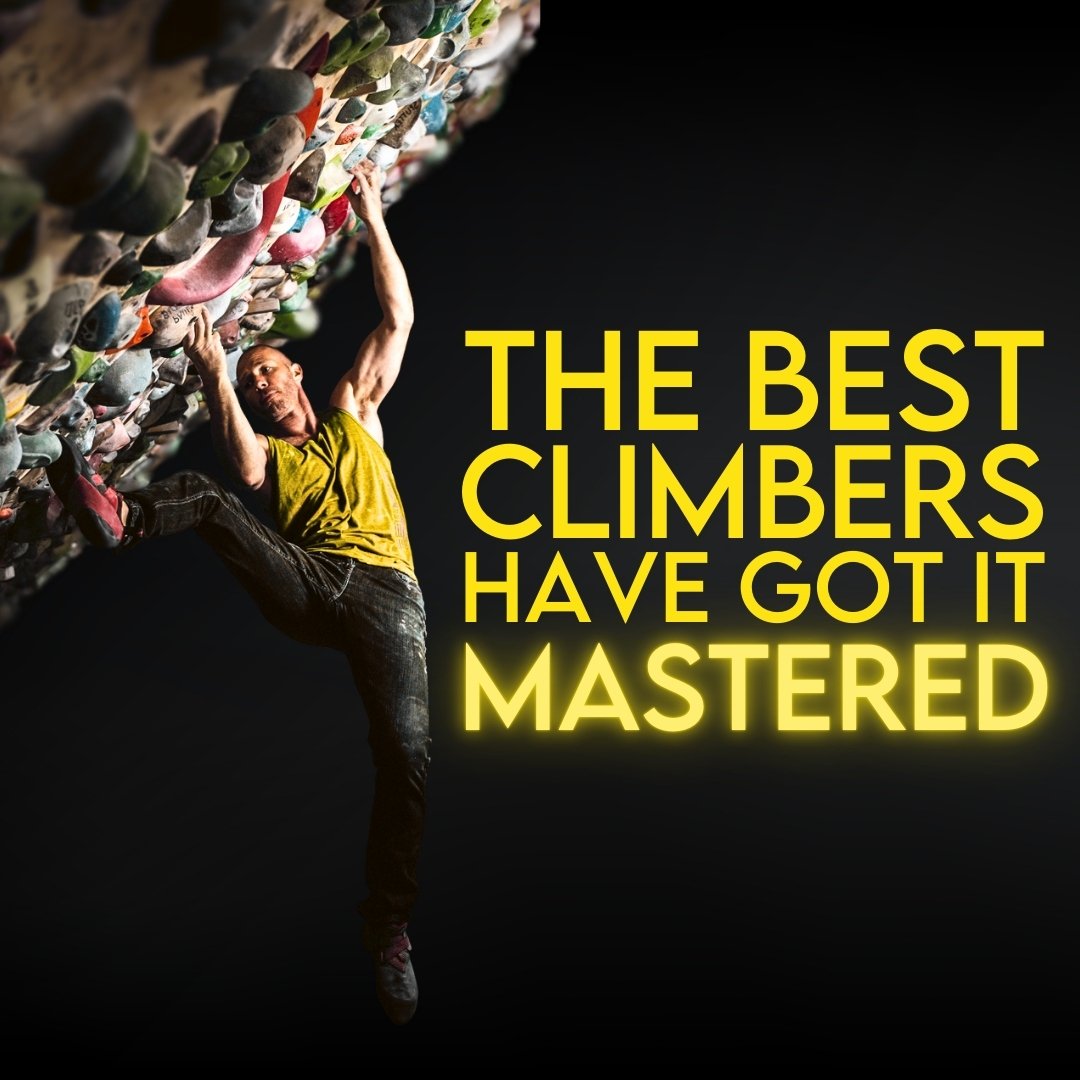Body Tension Techniques for Boulderers
Immediately after I climbed my first 14a, I decided to dedicate several years to bouldering – in part because I knew it would make me a better climber and in part to better understand bouldering logistics, tactics, and mindset. In those years, and in my coaching and consultations with climbers, it’s become pretty obvious that there are common grade plateaus at around V4, V6 or 7, and V9 or 10. I’m sure there are higher ones as well, but the vast majority of stuck boulderers fall into these three ranges. Much like my recent video for sport climbers,
There is a single, relatively small skillset that can help climbers break through these common bouldering grade plateaus or even avoid them altogether.
Let’s look at what that skillset is, why you haven’t gained it through bouldering in the gym, and what you can do to make sure that you're prepared to level up.
Let’s get into it.
We have to start indoors. Most boulderers these days are gym-bred, no matter how much time they ultimately spend outside. This isn’t a bad thing – gyms are ridiculously useful and routesetters are wildly valuable – but there are some skills that indoor spaces don’t excel at teaching. In fact, they often reward you for avoiding these skills.
And the skill that I believe to be one of the main reasons for these plateaus?
The ability to selectively create tension to ensure stability.
I think the need for it ramps up at these common sticking points. Not necessarily that you have to create more tension, though sometimes that’s true, but that it becomes more complex. At V4-V5 you might have to maintain it longer and understand how to grind through some slower moves. At V7-V8 you’ll more often have to create that tension while moving – or even in midair. And then to get firmly into the double digits, you’ll have to do all of that into and out of more and more difficult positions.
So why don’t we get this by just bouldering in the gym?
On both the popular training boards and the commercial sets, “harder” often comes down to bigger moves.
On the boards it’s huge moves to pretty good holds, and on the commercial sets it tends to be slopier holds, but the move itself is usually just a bigger move to a slightly worse hold. The footholds are usually huge in comparison to what you find outside on things of the same grade. And in most cases, jumping is rewarded. Getting a little out of control is often the best solution. It’s a necessary skill if you want to climb hard things. But it’s not the only skill.
And what happens when we are regularly rewarded for getting out of control is that when the setters present a climb that requires us to lock something down and move slowly and carefully, we bypass it for another board boulder we can jump through.
When we’re always jumping, the skill of creating selective tension on bad holds isn’t cultivated to the same degree.
And outside, that kind of extreme stability is often required.
How often indoors are you going to a tiny slot that you have to wriggle your fingers into, or a tight pocket, or a painfully sharp crimp that you have to get just right in order to pull on it?
Probably not very often.
How often indoors do you find yourself not able to put enough weight on a tiny dime-sized edge, so much so that you consider switching to a stiffer pair of shoes?
Probably not very often.
When the holds are big easy targets, and the feet are not much different than standing on a shelf, jumping is often the way. It’s the fastest, most efficient solution. You’re rewarded by choosing instability.
This issue doesn’t always present as jumping or cutting feet. Because the holds are usually good, it can present just as general looseness. It should be obvious which of these is more in control. This less controlled climbing is still effective – I get to the top – but it’s nowhere near as efficient because I’m crashing into the holds and wasting energy having to counter that crash and regrip every hold. I’m not being rewarded for my instability, but I’m not really incentivized to find stability either.
But how often have you been on something challenging outside and you have to get the next hold exactly right – your index finger needs to settle into a specific divot, but your foot picks off as soon as you try to weight it? The holds aren’t even that far apart but you just can’t engineer a way to do the move effectively because of the instability created by the scenario?
If you spend a lot of time climbing outside, you already know this is common.
This ability to selectively create tension and stability where it appears none is available – sometimes even mid-move – is what makes the difference.
Of course there are plenty of outdoor examples where the moves just get bigger, but there are far more examples of boulders whose cruxes revolve around your ability to create tension and do a relatively small move. Some of those seemingly simple huge moves actually also fall into this category – you just don’t know it yet. And let me say this right now: doing more core workouts is not the answer to this problem.
The only way to learn to create tension on the wall is to practice creating tension on the wall.
Can more core strength help? Sure, eventually. But right now you’re accessing way less than you have available, and no matter how much more you gain, it’s unlikely you’ll know how to access more than you are already.
Now, If you were to go through the assessment in my recent course, The Atomic Elements of Climbing Movement, you’d likely end up with your results revealing a need to focus on Position and Tension. Rhythm might be a secondary suggestion simply because you’re likely skewed toward only one side of the Rhythm spectrum – the “monkey” side. In my recent sport climbing video that is essentially the opposite of this, it was a Position and Commitment issue. In this case though, you are already good at the Commitment required to climb a little bit out of control – it’s the Tension required to remain in control that’s challenging. Next, you’d go to the Drill Matrix that is included in the course to see which drills fit our situation.
In this video, I’ll go over three of them: Sloth Monkey (focusing particularly on the Sloth side), One Size Fits All, and Dead Stops.
And if you’re not sure that this is exactly your issue, but we’re getting close, then you should watch this video next, because I’ve got a way to help you pinpoint exactly what you need to work on.
EXPLORE FURTHER
You might enjoy these related articles, episodes, and other resources:
Bouldering Tactics 101: The Power Spot
Bouldering Tactics 101: Overlapping Links
The Process of Dealing with Fear While Bouldering
Taped Tips | The Setup Mistake Climbers Make on Hard Moves
SUPPORT + CONNECT
Help us keep the show sponsor-free when you join our Patreon Community for as little as $3.
Get two or more bonus episodes every month on Patreon, Spotify, or Apple.
Subscribe to THE CURRENT and get a monthly exploration of how we can all become better climbers.



















Alex Megos once said that conditions don’t matter, but we all know that’s not true… or is it?